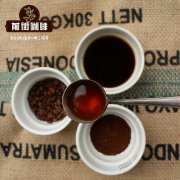Where does Yega Xuefei belong to? what is the grade of top coffee in Yega Xuefei?

Professional coffee knowledge exchange more coffee bean information please follow the coffee workshop (Wechat official account cafe_style)
Qianjie-introduction to Yega Chuefei Coffee
Ethiopia is a well-deserved hometown of coffee.
Coffee is said to have originated in the highlands of Cafa province in southwestern Ethiopia, and the name "coffee" is also related to this place. Ethiopia also has the largest number of native coffee varieties in the world. More than 3500 kinds of coffee have been recorded, and all of them are delicious and high-quality beans.
It has something to do with its topography. Although Ethiopia is in the tropics, its topography is mainly mountainous plateau, and the temperature is uneven with the topography. At high elevations, the cool temperature and abundant water make it especially suitable for the growth of high-quality coffee beans. The famous Yirgacheffee coffee beans are grown here. Yega Xuefei is one of the highest coffee producing areas in the world. Lake Turkana, Lake Abaya and Lake Chamo bring rich water vapor. At the same time, because of the terrain of the Rift Valley, it is foggy all the year round, cool and humid, and it is like spring all the year round, which makes the Yejashafi coffee beans show spring-like flower and fruit aromas.
Yejia Coffee Coffee is known as "fruit coffee". It has rich layers of flavor, supple entrance and charming aroma. Taste, like sweet fruit pulp, accompanied by a hint of honey, sour and lively and bright. It smells like jasmine and ginger flowers, as well as rich fruit aromas such as blueberries, strawberries and cantaloupes. There is a sentence to describe Yejia Xuefei-coffee entrance, flowers in full bloom.
There are still many unknown coffee varieties undiscovered in the magical land of Ethiopia, and there must be amazing flavors in those wild coffee fruits. We just have to wait, the most primitive coffee country will certainly give us more surprises.
Before the advent of ECX, for washed coffee, the export grade was G1 and G2; for sun-cured coffee, the export level was G3, G4, G4, G5, which means that the highest level of sun exposure was G3.
After the emergence of ECX, there is a redefinition of classification, and there is no difference in the classification name of washing, while the definition of sunlight appears for the first time G1, which is why Esser's sunburn is G1 and G2, while G3 begins to decrease slowly.
Ethiopian coffee beans are divided into five grades, the first stage (Grade 1) and the second stage (Grade 2) reserved for water washing. Grade1 represents 3 defective beans per 300g raw beans, and Grade 2 represents 4 defective beans per 300g raw beans. The quality of sun-cured beans was Grade 3, Grade 4 and Grade 5 in turn.
Knowledge: the Arabica system was probably first discovered in southern Sudan, but it did not flourish until it spread to Ethiopia.
In short: Qianjie is a coffee research hall, happy to share the knowledge about coffee with you, we share unreservedly just to make more friends fall in love with coffee, and there will be three low-discount coffee activities every month. The reason is that Qianjie wants to make more friends drink the best coffee at the lowest price, which has been Qianjie's tenet for 6 years!
END
Important Notice :
前街咖啡 FrontStreet Coffee has moved to new addredd:
FrontStreet Coffee Address: 315,Donghua East Road,GuangZhou
Tel:020 38364473
- Prev

How is the grade of boutique coffee Yega Xuefei divided? coffee taste describes flavor characteristics.
Professional coffee knowledge exchange more coffee bean information please follow the coffee workshop (Wechat official account cafe_style) front street-Yega Xuefei Coffee introduction to regular coffee friends all know that there are as many as 1500 kinds of coffee flavor, a good bean its flavor or mellow, or fragrance has a rhyme, or
- Next

Washed guji flavor flavor taste how Sidamo washed hero see champion style
Professional coffee knowledge exchange More coffee bean information Please pay attention to coffee workshop (Weixin Official Accounts cafe_style) Front Street-Guji washed hero coffee introduction About 1740, the Dutch in the West Indies territory, found that after peeling coffee cherries, this layer of pectin can be easily peeled off after soaking in water fermentation. This was the initial washing process. The Dutch invented the water washing method
Related
- Beginners will see the "Coffee pull flower" guide!
- What is the difference between ice blog purified milk and ordinary milk coffee?
- Why is the Philippines the largest producer of crops in Liberia?
- For coffee extraction, should the fine powder be retained?
- How does extracted espresso fill pressed powder? How much strength does it take to press the powder?
- How to make jasmine cold extract coffee? Is the jasmine + latte good?
- Will this little toy really make the coffee taste better? How does Lily Drip affect coffee extraction?
- Will the action of slapping the filter cup also affect coffee extraction?
- What's the difference between powder-to-water ratio and powder-to-liquid ratio?
- What is the Ethiopian local species? What does it have to do with Heirloom native species?

